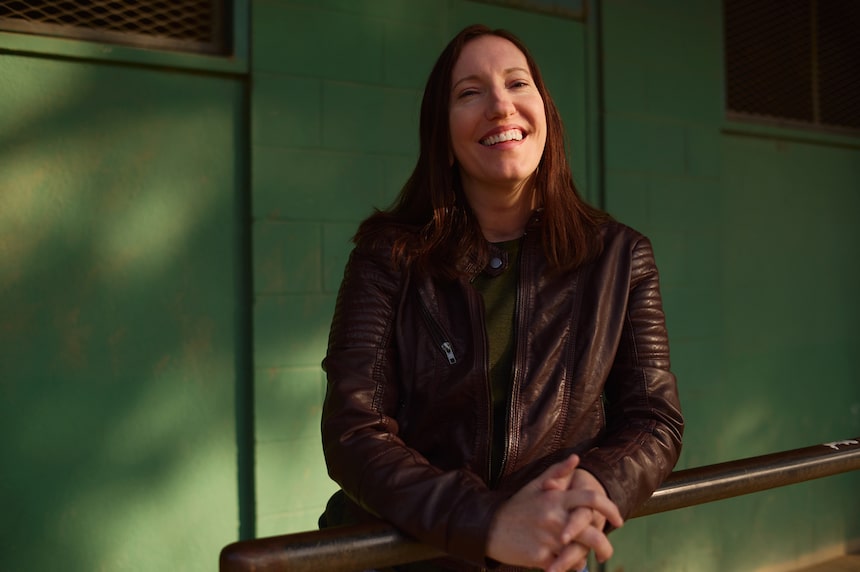Collectively at Teal, we have reviewed over 600 LinkedIn profiles of people who are looking to grow their career. Some were looking for a job, others were trying to solidify their place as subject matter experts, and others were aiming for a career shift.
There is huge potential on LinkedIn for career growth, networking, and long term success if you use it correctly.
Here are the 9 most important LinkedIn best practices to make sure your profile speaks fully to who you are.
- Make sure your photos are professional and up to date
- Write a concise and descriptive headline
- Craft your "about me" section to tell your story
- Take advantage of the featured section
- Include the relevant details in your work experience
- Build meaningful connections
- Actively engage on LinkedIn
- Source recommendations from your previous managers and peers
- To emoji or to not emoji
Keep your photos updated
The first thing people see when they click on your LinkedIn profile will be your header photo, your picture, and then your name. Remember, people read top to bottom, left to right, and are attracted to bold.
You'll want to make sure that your main header image is not taking away from your profile but instead adding value. This is a great place to show your personality, something that you're interested in, or the town you live in.
Make sure your header photo is clean, doesn't have a lot of text, and is visually pleasing. Imagery does affect the first impression that you give off.
For your profile picture, a professional headshot is ideal. If you don't have a professional headshot, then use the best photo of yourself.
Kim Apodaca, who you should follow on Instagram, is the queen of style. She's an expert in color psychology and you can learn how to use the imagery and colors in your photos to influence how someone feels when they hit your profile.
Write a concise and descriptive headline
Your LinkedIn profile headline should be concise and should tell the reader what they can expect from clicking on or scrolling down your profile.
A couple of LinkedIn Headline examples are:
- Current Title | Skill 1 | Skill 2 | Skill 3
- Title you are targeting | Relevant Skill 1 | Relevant Skill 2 | Relevant Skill 3
- I help XXX do XXX, XXX, and XXX
Try different variations of your header to see if that helps increase the number of people who are searching for you and viewing your profile.
Craft your about me section to tell your story
Don't be afraid to sprinkle some personality into your about me section. Your goal is to find the balance between sounding professional (not robotic) and presenting your best self.
That's why it's so important to be as tailored as possible with your content.
The next thing we noticed is that many about me sections were too long. Generally, readers shy away from long blocks of text.
You should expect someone reading your profile to be skimming through the content, so write your about me section in small consumable chunks.
Do not make any paragraphs more than 2-3 lines. The best about me sections we've seen follow the following format.
LinkedIn About Me Section Example
1st Section (2 lines) - Introductory statement about who the person is, what they do, and their core skills.
Skip a line after the paragraph.
2nd Section (2-3 lines) - More detail about the person, why they do what they do, their past experiences, or any relevant information they want people to read.
Skip a line after the paragraph.
3rd Section - A bulleted list of 3-4 core achievement-based bullets from previous positions. The more targeted these are, the better.
Take advantage of the featured section
LinkedIn gives you the ability to feature content you create on your profile. When a visitor scrolls down, they will see what you've added to the features section.
We recommend taking advantage of this profile section to highlight some of your tops posts or any articles you have written that show your industry knowledge, explains more about yourself, or highlights some of your passions.
Include the relevant details in your work experience
Throughout the profiles that we've reviewed, here are the three most common work experience mistakes.
Profiles showed too many positions that were not relevant anymore.
The past 5-15 years of experience will be the most important for visitors coming to your profile. For experiences that are 15 years old or longer, be sure that they are providing value. If they aren't, or if the positions are unrelated, then you may be able to remove them.
The content was too long, written in large blocks of text, and wasn't quantitative.
Visitors coming to your profile will scan your content. Since they won't read every word, it's your job to make it as easy as possible for them to find what you want them to read. If you need to explain what the company did, be sure it's no more than 2-3 lines.
Use bullet points to highlight what you achieved in the role and be as quantitative as possible to show results. Teal has a great experience builder tool that you can use to help you get started.
Profiles did not show any experience for the jobs or industries that they were targeting.
Your work experience section should show that you have experience in your field or the field you are targeting. If you don't have the direct experience, highlight the transferable skills and similarities from previous positions.
Build Meaningful Connections
When using LinkedIn to network and to source opportunities, don't add people with the goal of them offering you something. Lead with wanting to make a real connection with someone.
You'll be amazed at how many opportunities and intros you can get doing it this way.
If you're having trouble figuring out who to add, start here by adding
- People in your industry
- Members from any online group you are a part of
- Influencers and active posters in your field
- Any recruiters you interact with
- Would-be managers, recruiters, and hiring managers from companies you're targeting
It's important to get your connections to 500+. We know that it's a vanity metric, although it shows that you are well networked and active on the platform.
Remember that LinkedIn is full of people just like you who are trying to grow their network in a meaningful way, so you personally don't have to know them.
When you build your network intentionally, you're setting yourself up for long term success.
Actively Engage on LinkedIn
LinkedIn rewards engagement. The more active you are on the platform, the more LinkedIn's algorithm will prefer your profile.
There are a few things you can do to be active on LinkedIn.
Post:
When posting content, you don't have to be the number one expert in your field. It can be intimidating at first, although when you start to post regularly that feeling starts to go away.
Some ideas on what you can post are:
- Industry knowledge
- A skill or topic you just learned a lot about
- Insights from a presentation or event you recently attended
- Reposting other people's content
Comment:
When you comment on another person's post, you're helping them and you're helping yourself.
Since LinkedIn rewards engagement, your comment will help the poster reach a wider audience. The larger the audience, the more likely it is for you comment to be seen by more people.
When commenting, try to add more to the post by offering insight or additional thoughts. It's okay to disagree in a comment, just try to keep your comment productive to insight conversation.
Write Articles:
Writing articles on LinkedIn can be a great way to show your expertise in a field, your passions, or to show the human side of you. If you write an article, be sure to share it via a LinkedIn post to expand its reach. If the article is something you want a potential profile visitor to see, you can highlight it as a featured item to give it more of a reach.
Source Recommendations
The recommendations section of your profile can be a powerful tool to help prove your skills and abilities from the eyes of a third party. We suggest sourcing recommendations from previous managers, team members, or those that you've worked within the past. Many times, they will ask you to draft something up for them to post. If this happens, it's your chance to highlight the skills and experience you want to prioritize in your career.
Using Emojis on LinkedIn
There are competing views for using emojis in a professional setting. A rule of thumb is if you have to ask yourself if the emoji in question will take away from potential opportunities, then don't use it.
Using emojis will also depend on your personality.
If you need to be able to let your personality shine at work, then using an emoji or two won't hurt. The opportunities that may be missed, wouldn't be a good fit anyway.
If you're the type to let your personality shine outside of work and during work you'd rather be more "professional", then opt for no emojis, that's okay too!
Whether you choose to use emojis or not, be sure you use them sparingly. They can bring extra flavor and draw the eyes to certain aspects of your profile, but there is such a thing as using too many emojis.
Next Steps
Head over to our career tools page and sign up for a free Teal account to gain access to tools like the Bullet Point Generator, a Work Styles Assessment, the Job Application Tracker, and more.









